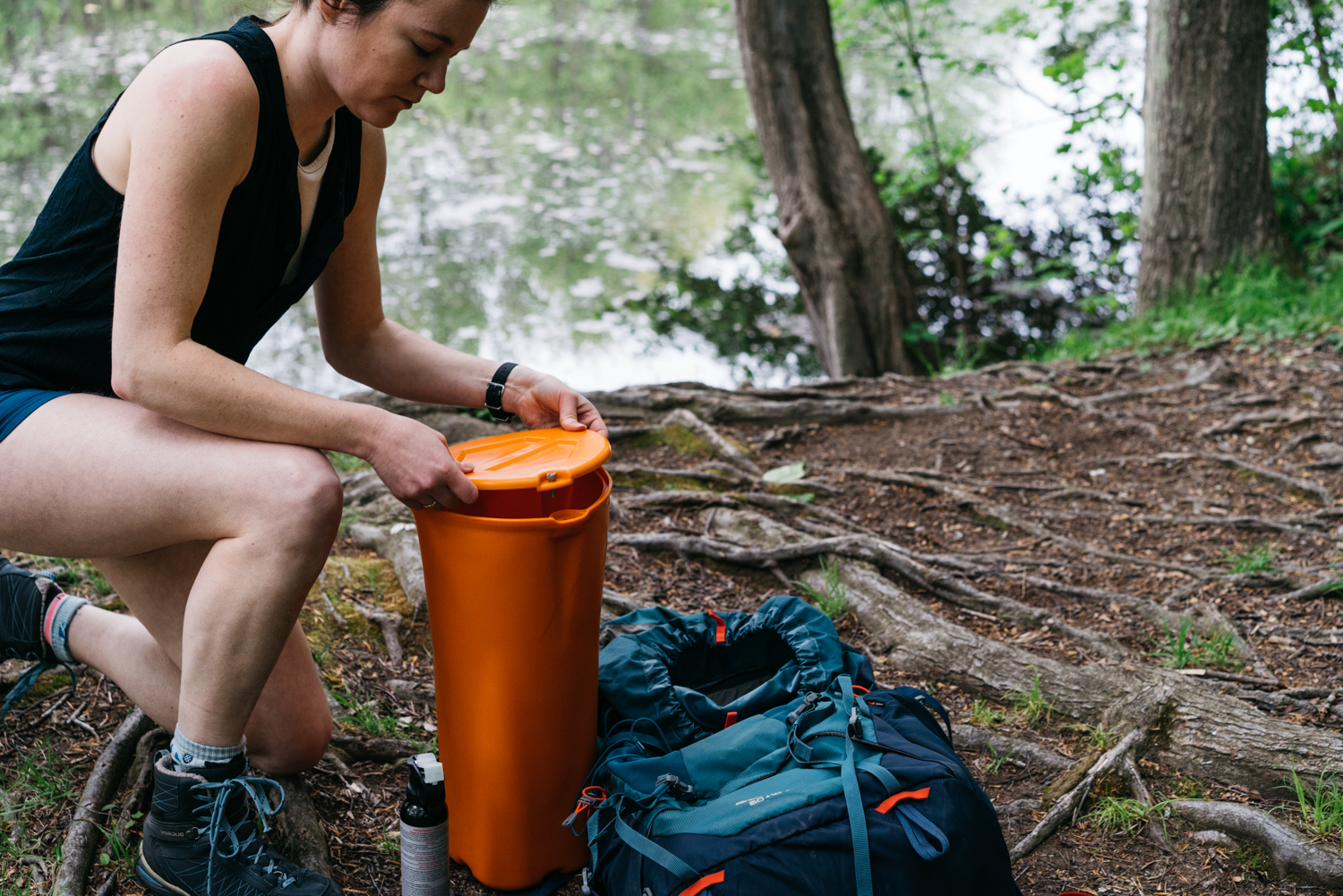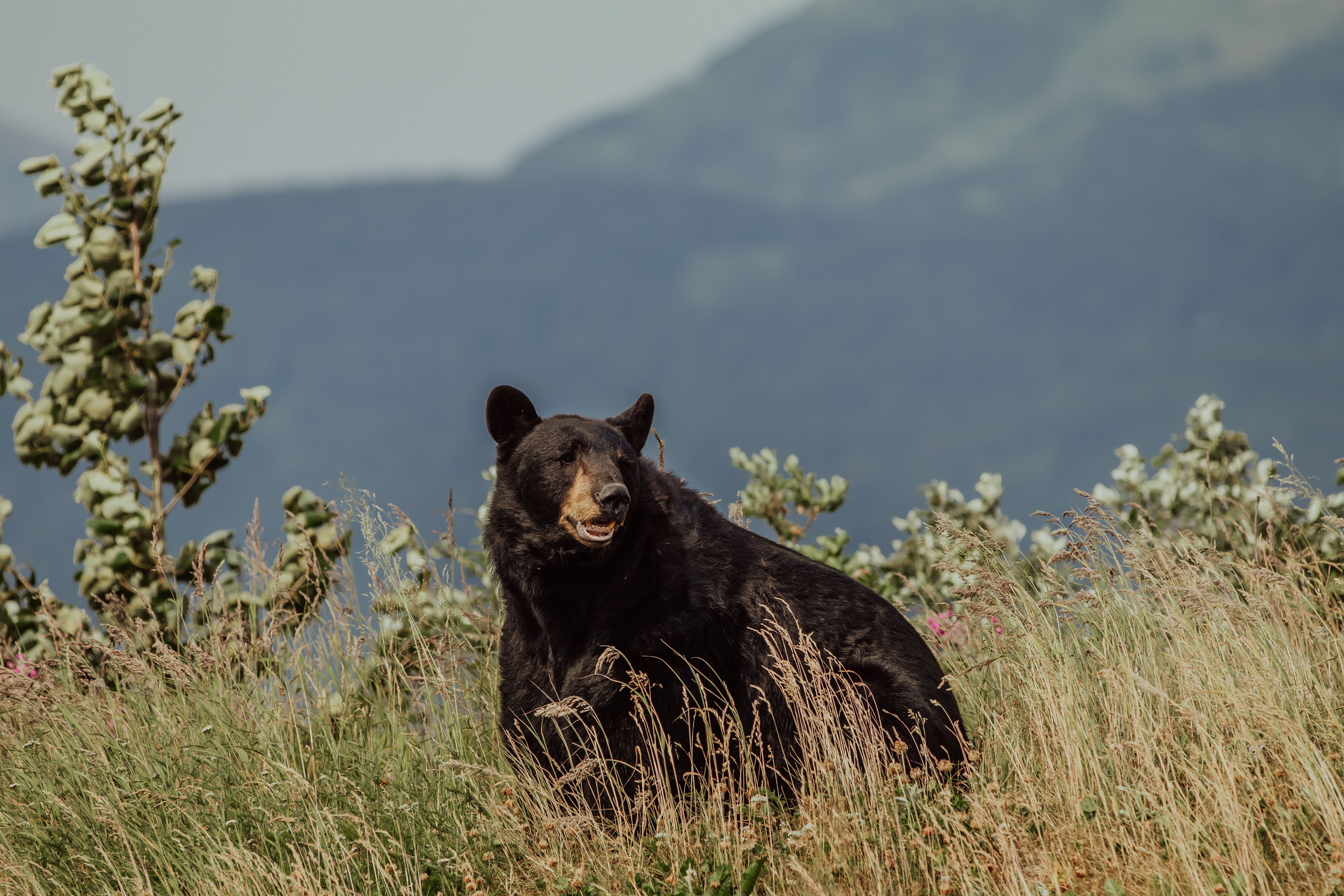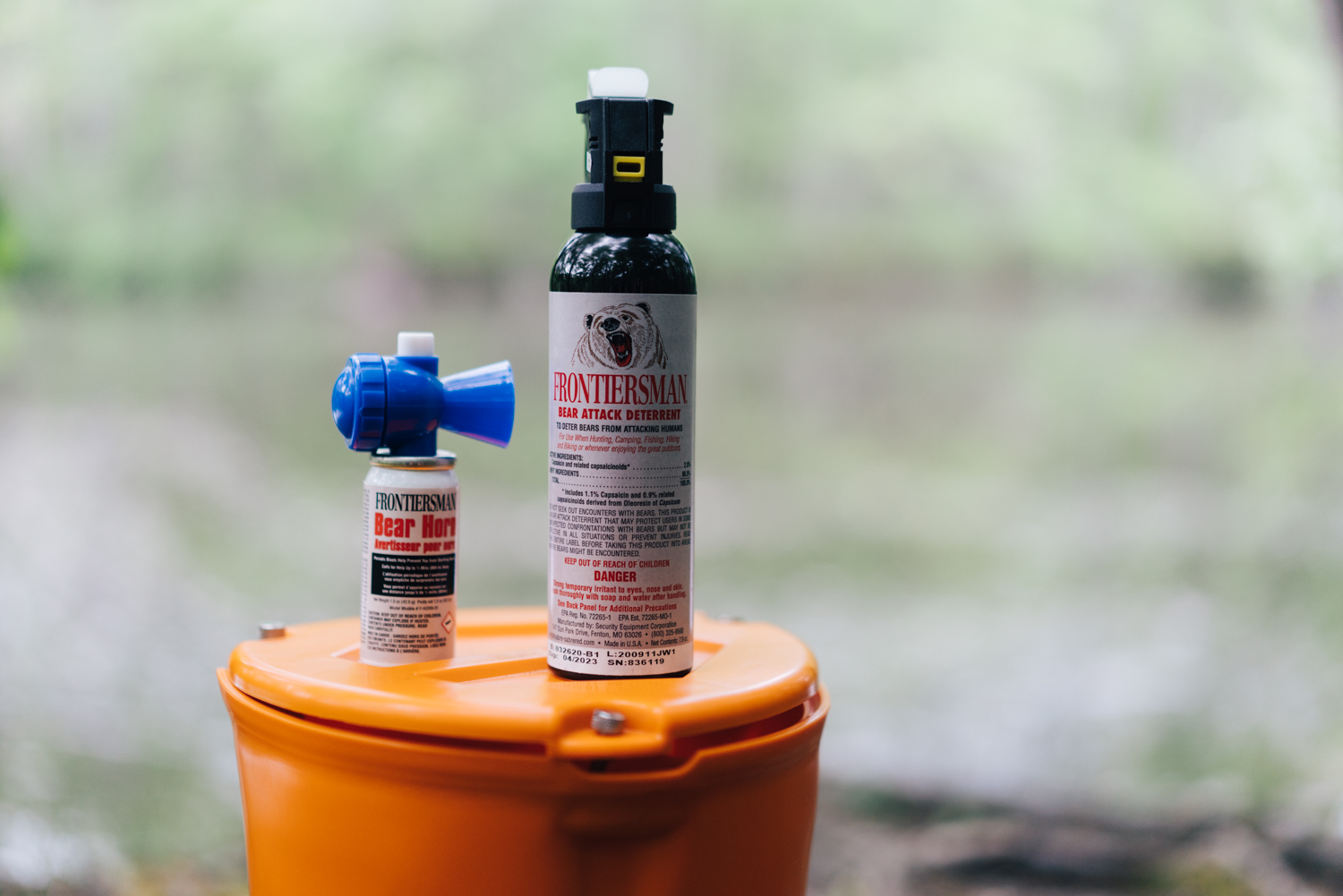Guide to Backcountry Bear Safety

In partnership with SABRE, by Laura Borichevsky
It’s no secret that a lot of us are trying to recreate responsibly this summer, which is turning our attention to the aspects of our favorite outdoor activities that might expose us to risk. When it comes to backcountry adventures, bears are a huge consideration. Maybe it’s something we’ve ignored for a while and gone outdoors hoping we don’t encounter one, or perhaps it’s something that’s stopped us from going outdoors or enjoying our own local region at all.
Either way, backcountry bear safety doesn’t have to be challenging to manage—and having a better understanding of what it takes to be safer outdoors right now, especially when it comes to bears, helps us to be able to enjoy any time we can be outside a whole lot more.
That’s why our team did some research and compiled the basics on backcountry bear safety here to help you get started.
Editor’s note: This is a starter guide, and while this compiled research is a great place to begin with bear safety preparedness, we acknowledge that your own approach to bear safety depends on a lot of factors, including location, season, your personal preferences, how much human contact the local bears are used to, and so much more. When in doubt, ask a local expert (like a Forest Ranger) and read further on anything you’d like to know more about.
First, Know Your Bears
While preventing bear encounters is the number one way you can help yourself feel confident and safe in the wilderness, knowing what bears you might encounter in the backcountry can help you to remain calm should one encounter you.
Different bear species
There are eight species of bear in the world, and of those, three exist in North America: the North American Black Bear, and the Brown Bear (also referred to as Grizzly Bears), and the Polar Bear (though you’re unlikely to encounter a Polar Bear unless you find yourself in the far northern regions of Canada). Maps like this one can help visualize where bear populations exist and overlap in North America. In the Lower 48, the species that humans are most likely to encounter are Black Bears.
Between the Black and Brown Bear in particular, you’ll generally be able to tell them apart by a few key characteristics—from shoulder hump, snout, to color variations (after all, Black Bears can be blonde and cinnamon colored!). If you are in an area where populations overlap, know the difference. While Brown Bear (Grizzly Bear) have a reputation for being more prone to bear attacks than Black Bear, we’re going to move through this article with the intention of helping you to be prepared for any kind of bear encounter, regardless of species.

One example of a Black Bear, note its straight face profile and lack of hump! — photo by Danika Perkinson via Unsplash
Boars, sows, and cubs
Perhaps more important than knowing what species of bear you’re encountering is whether it’s a boar (male bear), sow (female bear), or a cub (baby bear). While boars are generally larger and operate with a sense of confidence during bear and human encounters alike, sows—particularly when they have cubs in tow—can be more aggressive during an encounter because they are striving to protect their young. Likewise, encountering a cub can quickly become an encounter with a sow, as they often aren’t far from their babies.
Where you’re most likely to encounter bears:
If you’re reading this article, odds are that you’re hoping to head into the backcountry sometime in the future. It’s important anytime you’re in a region known for any kind of bear that you head out prepared to encounter one, so there are no tips to be found here on what trails are less likely to have bears. The reality is that bears love being outside more than you do!
That said, food sources are also a huge indicator of where a bear might gather, and it varies greatly by season. Knowing your plants and animals of the area you’re spending time in will help you to identify whether you’re planning to camp near a bear’s snack path, or simply some undefined grasses.
If you aren’t familiar with whether a region where you’re planning to recreate has a bear population, you can consult a map. We also recommend doing some research online or calling the local public lands office that manages the land you’ll be recreating on for confirmation and to see if there is any additional information rangers might have for you.
Basic Tips for Preventing Bear Encounters
Be aware of your surroundings
Look around for evidence of bear activity: broken sticks, bear scat, and prints in mud, dirt, or snow are a few giveaways.
Make noise on trail
Bears don’t want to encounter you any more than you want to encounter them. If you let them know you’re on trail or in the wilderness with your voice, you’re less likely to see them. Project loudly and confidently. Sing your favorite song or simply say, “Hey Bear!”
Use a bear safe
Bear safes are a great way to keep your food separate from your tent at night, and locked up tight to prevent a bear from enjoying some of your dehydrated meals as a midnight snack. We’ve checked out this bear safe from SABRE and it’s not only been tested through an official bear-resistant products testing program, but it’s also ergonomically designed to take up just the right amount of space in your backpack.
As a general rule, bear safes should be kept at least 100 feet downwind from your tent, and hidden in brush or rocks.
- Food safely stored inside the Frontiersman INSIDER Bear Safe
Keep it clean
Your kitchen area needs to be kept extremely clean overnight to avoid curious bears from coming to see if you have any leftovers you’re willing to share. Additionally, garbage is a major consideration. The smell can often carry more potent odors than food itself so doing what you can to seal any garbage you have is an important practice.
Manage smells
In general, anything with a strong scent may attract a bear, so it’s important to not only sleep away from your food, but also consider moving any of your scented toiletries to a separate bag or sealed container away from where you’re sleeping.
Create a deterrent
If it’s allowed, creating a smokey campfire can deter bears from coming near your camp. Make sure to check in with all of the regulations of the public land prior to building your fire, and to put it out completely before going to bed.
Backcountry Bear Safety Pack List
- Bear Spray: to use if needed to deter a close bear encounter
- Bear Bell: for on trail use or to put on you, your gear, or animals you’re outside with (Note: research is inconclusive on effectiveness)
- Bear Safe: for safely storing food and other items that carry a smell
- Bear Horn: to use as the first line of defense to deter a bear

A bear horn and bear spray with the brightly colored bear safe.
Tips for Carrying and Using Bear Spray
Bear spray is proven to be highly successful at stopping aggressive behavior in bears. In all likelihood, you won’t need to use it even if you do encounter a bear, but knowing how to do so can help your safety and confidence. It can feel intimidating to carry and use bear spray for the first time, but fortunately, there are loads of resources and tips out there to help you safely practice.
Know how you’re going to be carrying your bear spray.
Whether it’s a waist holster, an add-on to your bike setup, or something else designed to carry bear spray, make sure you have a plan for where you’ll be keeping it while you’re actively on a trail as well as at camp. Keep in mind that the closer you can have it to you or on you, the more readily accessible it will be.
Carry your bear spray with the safety on.
Bear spray comes with a safety clip. Keep it on when you’re carrying it and storing it so that it doesn’t leak or deploy when you’re not intending to use it.
Read up on proper usage for opening and testing bear spray.
If you haven’t used bear spray before, or if the kind you have is new for you, make sure you’re familiar with how to use it before hitting the trails. In addition to instructions that come with your bear spray, you can access videos like this one from SABRE on how to properly, safely use your bear spray.
Practice when you’re not in front of a bear.
You’ll feel more confident in your ability to manage bear spray after physically practicing it yourself, and the best time to practice is when a bear isn’t right in front of you. Consider getting a can of practice bear spray so that you can go through the movements without worrying about the contents as much before doing a practice with live bear spray in an open, uninhabited environment on a non-windy day.
- Carry bear spray with the safety on.
How to Respond to a Bear Encounter
Remain calm.
It’s normal to be in fight or flight, but take a breath, and don’t panic if you find yourself shaking or having another natural, physical response.
Assess the situation.
Do you have an exit? Is anybody else with you? What is the bear’s current response to you being in a shared environment? Are there other bears around or safety considerations you need to make? Unless you’re in immediate danger, ask yourself questions to better understand if you can remove yourself safely from the situation, or to identify what deterrent methods will be the most effective first lines of defense, starting with the least harmful— like making a safe exit if it’s possible.
Know what to do if the bear has identified you
…and seems interested in your presence. The National Park Service has a list of strategies for do’s and don’t’s of bear encounters. This is also where knowing your bear is important, because species, gender, and context can play a role in how you may want to respond and what will be the most effective form of deterrent or protection.
If you’re on trail, actively leave the situation as soon as it’s safe enough to do so.
It’s natural to enter a state of shock when encountering a bear, but there is a reason you encountered the bear where you did, and whether it’s because the bear was looking for food, traveling, or something else, it’s possible that the bear will want to return to the location you found it at. Remove yourself from the scene and relocate to a place that feels safer, such as one that’s more populated, more open, or where you have a better vantage point.
Photos by Gale Straub & Jon Gaffney
This article was produced with support from our brand partner Sabre, who make personal safety products to keep you prepared for whatever lies ahead.




Be the first to comment